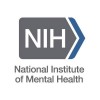
PEERS Plus mHealth Enhanced Peer Support
Depression in Old AgeThe goal of this intervention study is to design and learn whether peer support that is delivered through video chats and texting can decrease depression among older adults. Participants will be assigned to a peer support program where they will receive 8 video chats with a peer mentor who provide social support and supportive texts over 8 weeks.

CBT-I vs. MBTI for Traumatic Brain Injury (TBI)-Related Insomnia and Post-Traumatic Stress Symptoms...
Traumatic Brain InjuryInsomnia9 moreThis study is a prospective two-arm, single blind randomized controlled trial design to compare the clinical effectiveness of telemedicine-delivered, 6-session, standardized cognitive behavioral therapy for insomnia (CBT-I) and mindfulness-based treatment for insomnia (MBTI) in treating insomnia symptoms and ameliorating depressive symptoms in persons with mild to moderate TBI and comorbid Post-Traumatic Stress Symptoms (PTSS) and insomnia symptoms in a 360 patients. Participants will undergo assessment (psychosocial questionnaires, neurocognitive testing, sleep monitoring) at baseline, at the end of treatment, and at 6- and 12-weeks post-treatment. The primary outcome is sleep as measured by the Insomnia Severity Index (ISI).

Transcranial Magnetic Stimulation for Youth With Treatment-Resistant Major Depressive Disorder
Major Depressive DisorderBackground: Major depressive disorder (MDD) is one of the most impairing medical conditions in the world. Medication and some kinds of talk therapy are standard treatments for teens with MDD, but these do not work well for everyone. Transcranial magnetic stimulation (TMS) has been approved to treat MDD in adults. TMS might help adolescents, too. Objective: To test TMS combined with cognitive behavioral therapy (CBT) in teens with MDD. Eligibility: People aged 13 to 17 years with MDD that has not responded to treatment. Design: Participants will be screened. They will have a physical exam and psychiatric evaluation. They will have an MRI scan and a test of their heart function. They will enroll in 2 NIH protocols (01-M-0254 and 18-M-0037). For 2 to 6 weeks, participants will have weekly CBT, a kind of talk therapy. They will taper off of their psychiatric medicines. For 2 weeks, participants will come to the clinic every weekday. They will receive 3 or 4 sessions of TMS on each of those days. A wire coil will be held on their scalp. A brief electrical current in the coil creates a magnetic pulse that affects brain activity. They will receive 30 TMS pulses in 10-second bursts; these will be repeated 60 times in each 15-minute session. Participants may hear a click and feel a pulling sensation under the coil. They may feel their muscles twitch. Each day, they will have tests of concentration, thinking, and memory. Some may have a 3rd week of TMS. Participants will remain in the study for 5 more weeks. They will begin taking their medications again.

Effect of Depression, Anxiety and Stress Scores on Embryo Transfer Success
StressPregnancyPsychological status of couples attending to IVF programmes is important due to possible effect on final result. Observers aim to invertigate the depression, anxiety and stress scores of couples before and after the procedure.

Tolerance and Potential Synergistic Effect of the Combination of Intranasal Esketamine and Non-selective...
Depression Anxiety DisorderThere are already recently published data on the tolerability and efficacy of the combination of ketamine and/or esketamine with MAOIs. However, these reports are few and far between, and to our knowledge, there are no data involving intranasal esketamine. Given the numerous interactions between MAOIs and other antidepressants, and the impossibility of combination, this pharmacological class is neglected. This is despite the fact that MAOIs are the only truly tri-aminergic drugs, that they have unparalleled efficacy in certain forms of resistant apathetic depression, and that new, more dietary permissive forms have appeared on the market. The arrival of antidepressants that can be combined with MAOIs, such as ketamine and esketamine, changes the situation and could offer a new treatment opportunity to many patients in a therapeutic impasse. For these opportunities to become a reality, sharing the clinical experience gained by specialized centers is essential.

CBT and the Neural Circuits of Anxiety
Generalised Anxiety DisorderAnxiety Disorders7 moreThis study will aim to test whether specific neural circuitry changes, proposed on the basis of a neurocognitive model of anxiety, are a mechanism of action for Cognitive Behavioural Therapy (CBT) interventions. This study aims to provide a theoretical model of the neurobiological mechanisms of CBT's therapeutic effect, where there currently is none, and potentially allow for more targeted/specific approaches to anxiety disorders following the identification of key CBT mechanisms. The ultimate aim is to improve the efficacy of CBT, and more generally, psychological interventions for anxiety disorders.

A Scalable Psychological Intervention to Reduce Psychological Distress Among Workers of Assisted...
DepressionAnxiety1 moreBackground: The COVID-19 pandemic has impacted the mental health of workers of Assisted Living Facilities (ALFs). This study combines two low-intensity psychological interventions developed by the World Health Organization (Doing What Matters [DWM] and Problem Management Plus [PM+]) into a stepped-care program for workers of ALFs. Objective: To evaluate the implementation of an stepped-care program (DWM; PM+) amongst workers of ALFs during the COVID-19 pandemic in terms of mental distress, resilience and wellbeing. Study design: A randomized controlled implementation trial with an single-blinded, parallel-group design. Study population: Workers of ALFs with self-reported elevated psychological distress. Intervention-study: All participants (in both the treatment and the comparison group) will receive Psychological First Aid (PFA) and care as usual (CAU). In addition to PFA and CAU, the treatment group will receive the stepped-care intervention (DWM with or without PM+). The stepped-care intervention consists of DWM (step 1) and conditionally PM+ (step 2) if participants still meet criteria for psychological distress (Kessler Psychological Distress scale (K10) >15.9) 1 month after having received DWM. Main study parameters/endpoints: Screening for inclusion and exclusion criteria will be interviewer-administered through phone calls. All assessments will be online and will take place at baseline, 2 weeks after having received DWM, 1 week after having received PM+ and 2 months after PM+. The main study parameter will be the decrease of anxiety and depressive symptoms from baseline to two-month follow-up, measured through the sum score of the Patient Health Questionnaire (PHQ-9) and General Anxiety Disorder-7 (GAD-7), i.e. the PHQ-Anxiety and Depression Score (PHQ-ADS).

Depression in Patients With Mild to Moderate Depression
DepressionThe main purpose of this clinical trial is to evaluate the clinical efficacy and safety of adjuvant intervention therapy software for depression in patients with mild to moderate depression

The Effect of Soluble Epoxide Hydrolase (SEH) on Depression
Major Depressive DisorderDepression is the most common mental disease and the second leading cause of chronic disease burden, which is closely related to suicidal behavior. The diagnosis and treatment of depression still lack of effective biological indicators, and about 30% of patients with depression still can not relieve their depressive symptoms after treatment. Previous studies have found that ATP release from astrocytes plays an important role in the occurrence, development and treatment of depression. Epoxy eicosotrienes (eets) are closely related to the function of the nervous system and may be the pathophysiological mechanism of depression. Soluble epoxide hydrolase (SEH) can regulate ATP release by affecting EET degradation, leading to depression like behavior and antidepressant effect, and sEH is closely related to cognitive function of depression.

A Trial of Enhanced Versus Standard Measurement-Based Care Implementation for Depression
Major Depressive DisorderMobile HealthMeasurement-based care (MBC) is an evidence-based practice that incorporates routine outcome assessment using validated rating scales to guide collaborative clinical decision-making. Although MBC results in improved outcomes for patients with major depressive disorder (MDD), there are barriers to its broad implementation in clinical settings. The use of "enhanced" MBC (eMBC), with mobile apps that allow patients to track outcomes and engage in self-management via WeChat, may address some of these barriers. This study intends to compare differences of efficacy between the implementation with eMBC using WeChat and the standard MBC implementation using paper-pencil assessments at the clinic, for both implementation and clinical outcomes.
